National Geographic

Banana-destroying fungus hits South America. Is genetic engineering the solution?
A fungus that has wreaked havoc on banana plantations in the Eastern Hemisphere has, despite years of preventative efforts, arrived ...

Balance of Nature: Ecology’s enduring myth debunked
Strolling across his animated kingdom—Pride Rock in the distance—Mufasa explains to his young son Simba: “Everything you see exists together, ...

Genetic engineering is changing our food. An expert explains everything you should know
SCIENTISTS CONTINUE TO find new ways to insert genes for specific traits into plant and animal DNA. A field of promise—and ...

‘The Tangled Tree’: Book explores what’s wrong with Darwin’s theory of evolution
Until recently, the central tenets of Darwin’s theory of evolution, from how heredity works to the gradual variation in species, had ...
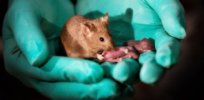
Two moms, no dad? Gene editing allows same-sex mice to have babies
Using gene editing and stem cells, researchers in China have helped mice of the same sex bear pups. While this ...
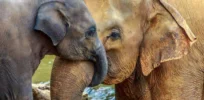
‘Zombie gene’ could explain why elephants rarely get cancer
[B]igger animals, which have more cells, should have greater occurrences of cancer. By that reasoning, elephants, with hundreds of times ...

The next food revolution: Brought to you by CRISPR gene editing
Crispr has the potential to boost yields, disease resistance, and taste, and even tackle allergens like gluten. It could radically ...
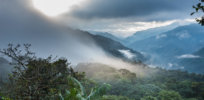
Remnants of ancient society found in Ecuador’s cloud forest
In the 1850s, a team of botanists venturing into the cloud forest in the Quijos Valley of eastern Ecuador hacked their way ...

Can you inherit a laugh? Book explores this and other genetics questions
Why are people today often taller than their ancestors? If you have blue eyes or red hair, does that mean your children will ...
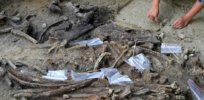
Which of our hominid ancestors forged stone weapons used to kill rhino in the Philippines 700,000 years ago?
Stone tools found in the Philippines predate the arrival of modern humans to the islands by roughly 600,000 years—but researchers aren’t ...

Life on Earth: How aliens might go about discovering us
[L]ight-years from our solar system, other intelligent beings on a similar planetary oasis might be gazing in our direction and ...
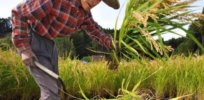
Viewpoint: Green Revolution II will require GMOs and a paradigm shift toward lower-input farming
From the 1960s through the 1990s, yields of rice and wheat in Asia doubled. Even as the continent’s population increased ...

National Geographic confesses to history of ‘racist’ coverage in special issue
National Geographic strives to deepen our understanding of the world and our role in it. It’s difficult to understand 21st-century America ...
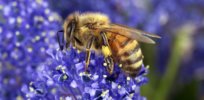
Should we create ‘genetically superior’ bee species resistant to varroa mites?
In Australia, the bee industry is trying to find a way to protect Aussie bees from the varroa mite before ...

Viewpoint: How genetics challenges the ‘folk notion’ of distinct races
Speaking from the BBC studio in London where he hosts the weekly radio program Inside Science, [geneticist Adam] Rutherford explains how ...
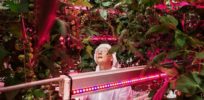
How the Netherlands became a high tech farming center
Almost two decades ago, the Dutch made a national commitment to sustainable agriculture under the rallying cry “Twice as much ...

Feline friends: Cats took their time on the path to domestication
In true feline form, cats took their time deciding whether to jump into humans’ laps. In a new comprehensive study ...
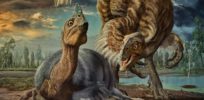
‘Baby dragon’: Giant bird-like dinosaur preserved in egg resembled an overgrown ostrich
More than 20 years after gracing the cover of National Geographic as “Baby Louie,” a tiny dinosaur found curled inside ...
What would we lose if we gave up GMOs?
The GLP aggregated and excerpted this blog/article to reflect the diversity of news, opinion and analysis. Greenpeace calls GMOs "genetic ...
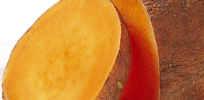
2016 World Food Prize goes to scientists who developed biofortified sweet potato
The GLP aggregated and excerpted this blog/article to reflect the diversity of news, opinion and analysis. A handful of scientists ...
DNA phenotyping revolutionizing forensics
The GLP aggregated and excerpted this blog/article to reflect the diversity of news, opinion and analysis. On the morning of ...
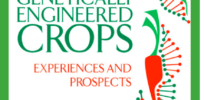
National Academy of Sciences says GMOs safe for humans and environment, but no panacea
The GLP aggregated and excerpted this blog/article to reflect the diversity of news, opinion and analysis. Genetically-engineered crops are as ...
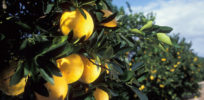
Instead of GMO citrus greening solution, Florida officials seek permission to spray antibiotics
The GLP aggregated and excerpted this blog/article to reflect the diversity of news, opinion and analysis. Florida’s Department of Agriculture ...
What kinds of bacteria make their home in your mouth?
The GLP aggregated and excerpted this blog/article to reflect the diversity of news, opinion and analysis. The study of the ...
Animals’ eyes pose big questions for evolution
The GLP aggregated and excerpted this blog/article to reflect the diversity of news, opinion and analysis. “If you ask people ...
Video series takes consumers inside large scale livestock, produce farms
The GLP aggregated and excerpted this blog/article to reflect the diversity of news, opinion and analysis. As 2016 approached, two ...

Can walk in the park improve mental health of city dwellers?
The GLP aggregated and excerpted this blog/article to reflect the diversity of news, opinion and analysis. In 1865 the great ...
Australian Aboriginals descendants of first migrants out of Africa
The GLP aggregated and excerpted this blog/article to reflect the diversity of news, opinion and analysis. Genographic Project scientists in ...

